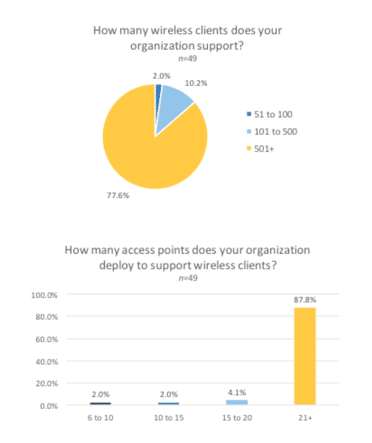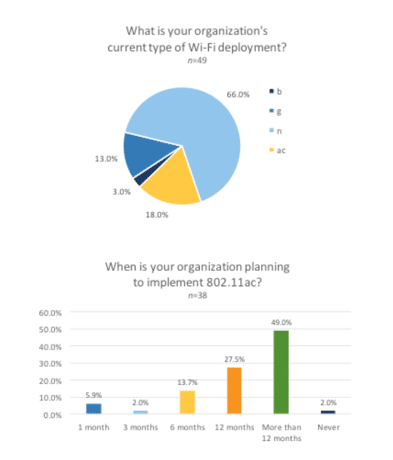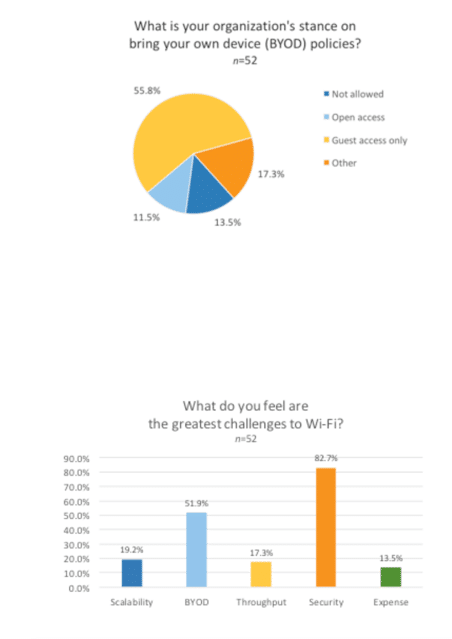As the fastest-growing segment of network infrastructure, wireless networking is quickly replacing wired connections in the enterprise. NSS Labs conducted an independent study in an effort to evaluate the wireless deployments, policies, and concerns of Fortune 1000 companies. Cybersecurity officers (n=53) from Fortune 1000 companies that own and operate wireless security products participated in an online wireless networking survey.
KEY FINDINGS
- 77.5% of respondents have more than 500 wireless clients, and 87.7% of respondents have more than 21 access points to support those clients.
- The n networking standard is employed by 51% of respondents; 802.11ac deployment is more than 12 months away for most organizations (49%).
- Security was identified as the greatest challenge associated with Wi-Fi (82.6% of respondents), followed by bring your own device (BYOD) policies (51.9% of respondents).

Survey results suggest there is substantial wireless infrastructure in Fortune 1000 companies—77.5% of respondents deploy more than 500 wireless clients, and 87.7% of respondents have more than 21 access points to support those clients.
Then networking standard was the most commonly reported Wi-Fi deployment (51%), with 802.11ac deployment still more than 12 months away for 49% of respondents. When respondents were asked about the greatest challenges associated with Wi-Fi, security was the most common answer (82.6%), followed by BYOD (51.9%). Only 11.5% of enterprises have open access BYOD policies; the majority of enterprises (55.7%) permit guest access only; and 13.4% prohibit personal devices on enterprise wireless networks.

Overall, results suggest that for enterprises, wireless deployment is substantial and evolving. Given the increased use of wireless as a result of new technologies, BYOD, the Internet of Things, and corporate use of smartphones and tablets, it is no surprise that security was reported as Wi-Fi’s greatest challenge. Enterprises should carefully evaluate their current wireless security infrastructures and allocate resources to accommodate the shift to wireless traffic.

